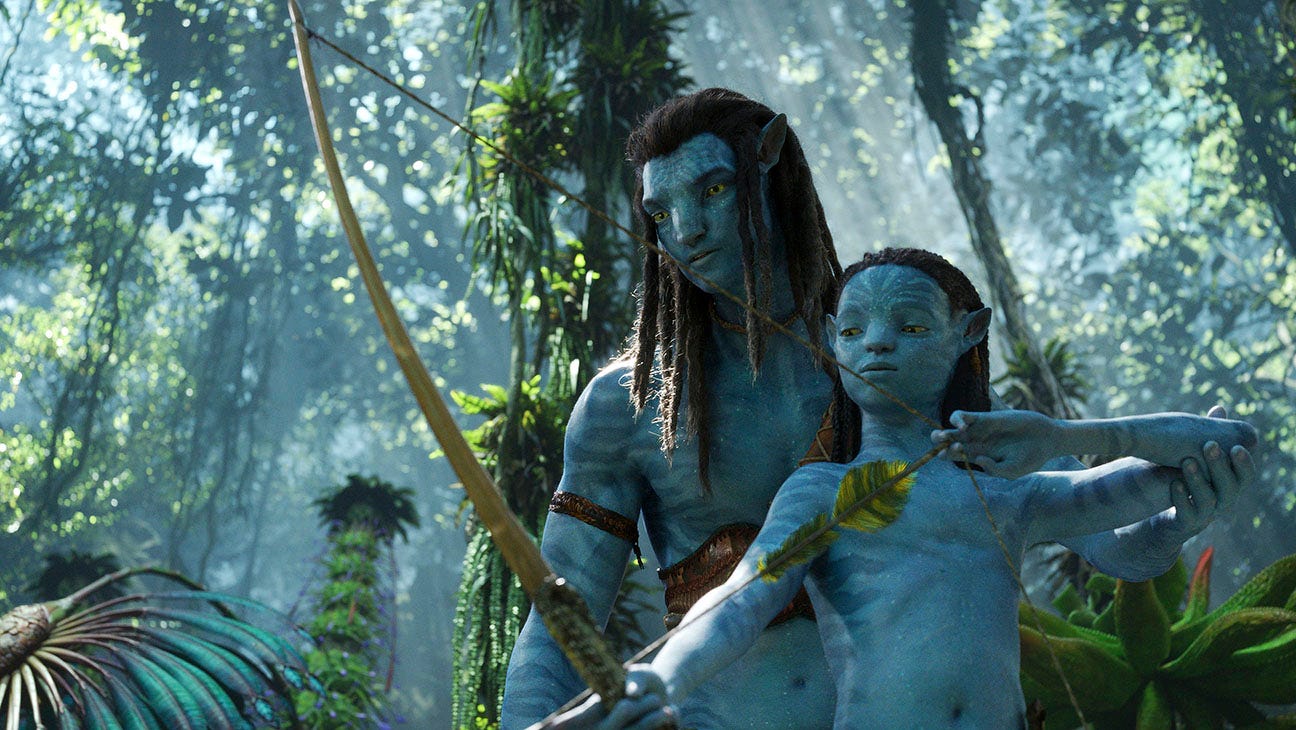
Do you remember Avatar syndrome?
After James Cameron’s epic 2009 multi-billion dollar blockbuster, a contingent of moviegoers experienced a depressive longing to live as a Na’vi — to roam as one of Pandora’s native humanoids through the world’s expansive, imaginative forests and soar between floating rocks on dragon-like creatures.
The syndrome, remarkably (or eerily), resembled protagonist Jake Sully’s arc, in which he transported his conscientiousness from his disabled human form into his avatar, Na’vi body. He escaped his reality and forged a new one.
The first movie was cinematic escapism with a heavy environmental-conservation theme and, clearly, Avatar resonated with many audience members and critics alike (the film received nine Academy Award nominations, winning three). Cameron created an immersive, virtual-reality, computer-generated experience akin to a theme park ride or a top-notch video game. However, even back then, this author felt the special effects far-and-away took precedent over the story — which was a predictable, by-the-numbers plot. Since its release, online critics have lambasted Avatar as the Dances with Wolves in space — but unlike the latter, Avatar never had a scene where the filmmakers tried to organize a massive buffalo hunt with real buffalos and real stuntman.*
As Cameron’s contemporary George Lucas once said, “A special effect is a tool, a means of telling a story. A special effect without a story is a pretty boring thing.” (Side note: Lucas should have heeded this advice for the prequels, but I digress)
That was true of Avatar. Since my 2009 theater experience, I have never longed to return to Pandora because Jake Sully and the Na’vi weren’t captivating enough (unlike Luke Skywalker in a galaxy far far away for comparison’s sake). And where would the story go? In true irony, for all the world-building, Cameron never built in enough engaging narrative rabbit holes — or story threads — for future films. Essentially, every sequel would be henceforth pigeonholed into a ceaseless conflict between Pandora’s peaceful natives versus imperialist, militaristic Earthlings.
After 13 years of development, Avatar: The Way of Water is exactly what you would expect — a computer-generated marvel (truly top-notch quality), but an uninspired, predictable storyline that repeats plot beats from its predecessor. Environmental protectionism still thematically serves as the story’s foundation in the sequel (as Cameron said in this GQ interview); however, for the amount of people credited to the story (there are five), surely a more captivating story could have been created, right?
But that isn’t the case in this sequel.
Even with the different water-centric environment, creatures and so on, there is nothing narratively groundbreaking in Avatar: The Way of Water. Jake Sully faces similar issues of ingratiating himself with a native tribe of Pandora (albeit this time with Zoe Saldaña’s Neytiri and their several children), and a similar foe (Stephen Lang’s Quaritch) returns to hunt him, while wreaking devastation on the natural world. The father-son dynamic Cameron introduces is one of the few interesting directions the sequel takes (especially Quaritch’s relationship with his ‘son’ Miles/Spider), but Sully’s paternalist anxiety and guidance never reach an emotional depth that elevates the story beyond a middle-of-the-road plot. In fact, Sully takes more of a backseat compared to his son Lo’ak (Britain Dalton), who is given an extensive amount of screen time — yet the film’s arc weakly rests on the former.
And that conclusion only hints to a ‘rinse, recycle, repeat’ plot for the subsequent, already filmed sequels.
However, there is ‘love’ behind the camera; more so for the world than the characters themselves. The characters feel like props — or stand-ins — for the audience to explore Pandora’s wonders in a nearly sensory-overload, bloated fashion. Cameron could have cut nearly an hour from the finished film and achieve the same thematic and immersive result. And despite this ‘love,’ because of the weak characters, most of the wildlife never leaves as lasting of an impression as say Treebeard from The Lord of the Rings — a Middle Earth creature who, comparatively, embodies J.R.R. Tolkien’s environmental protectionist beliefs. The only exception is a whale-like creature who befriends Lo’ak.
To his credit, Cameron is one of the last profitable — dare I say — auteur filmmakers working today, the other few being directors like Christopher Nolan (who, however, had a box-office dud with Tenet) and Quentin Tarantino. The billion dollar risk invested in the computer-animated, motion-captured Pandora is a testament to his ability to reach nearly every demographic; and it shows in the box-office gross (which, at the time of writing this, the film eclipsed the $1 billion mark).
Yet, for all of the technical wizardry, Avatar: The Way of Water remains a ‘meh,’ borderline hollow experience even as the most expensive animated movie ever: a pretty, over-extended virtual reality tour with decent vistas and action set pieces, but lackluster, unimaginative characters dwelling within the world.
Safe to say, next time I go to the doctor, Avatar syndrome won’t show up as a diagnosis — but I might be missing something between my ears...
Two out of Four Stars
*Appendix I: Dances with Wolves isn’t a fantastic movie. It shouldn’t have bested Goodfellas in the Best Picture category at the 63rd Academy Awards. However, the film has more engaging character dynamics than Avatar.
Appendix II: Before the movie, there was a preview for Mission Impossible: Dead Reckoning - Part 1, showing Tom Cruise perform a dangerous stunt (see here). Those few minutes were more engaging than anything in Avatar: The Way of Water because it was real. It took hands-on, gritty filmmaking. And while motion-capture is technically marvelous, there is a reason why Gollum is more endearing than Jake Sully — you need the right performers, heart, and character depth behind the virtual mask.
Appendix III: If you decide to see Avatar: The Way of Water, I would recommend the IMAX experience.


